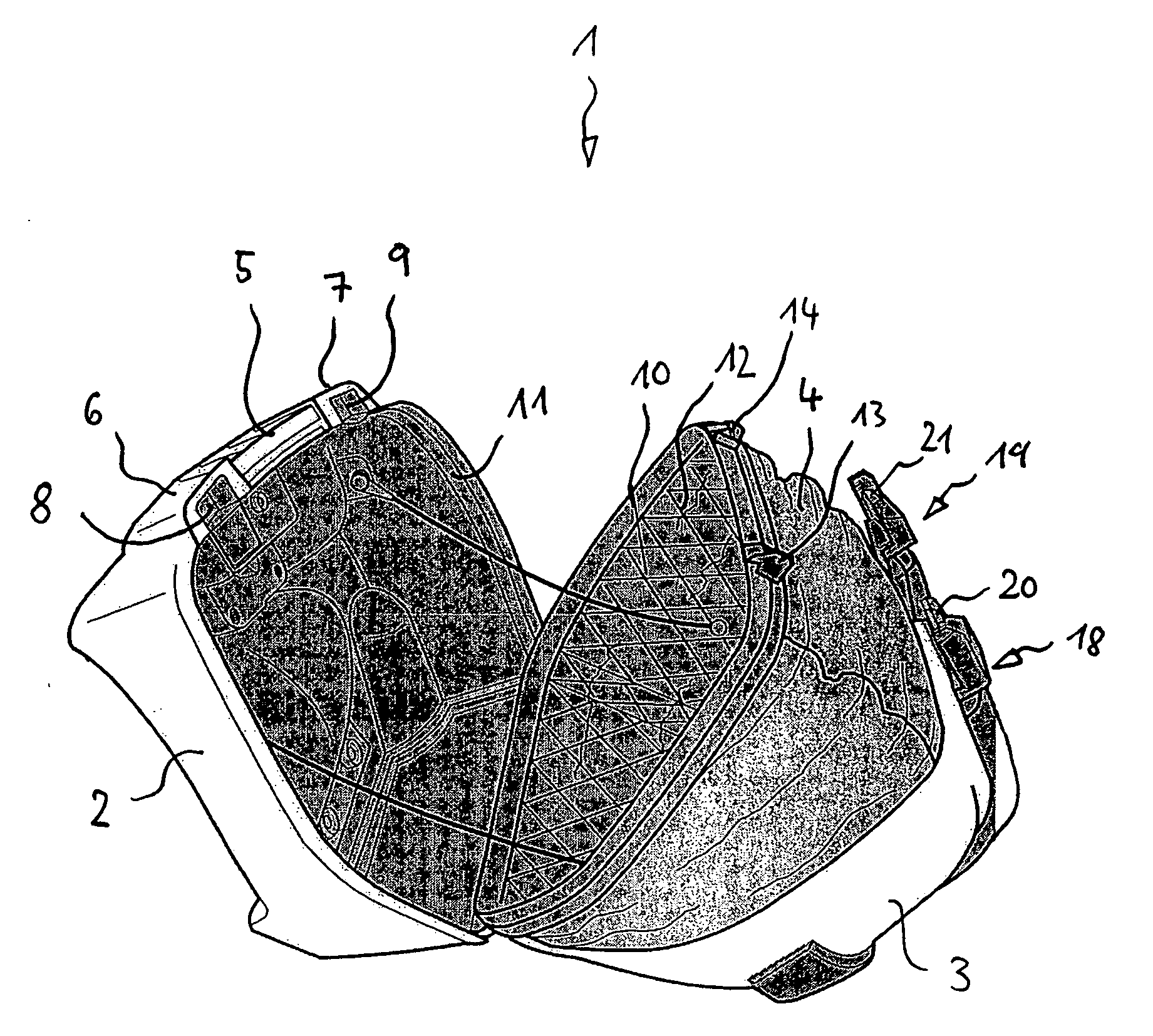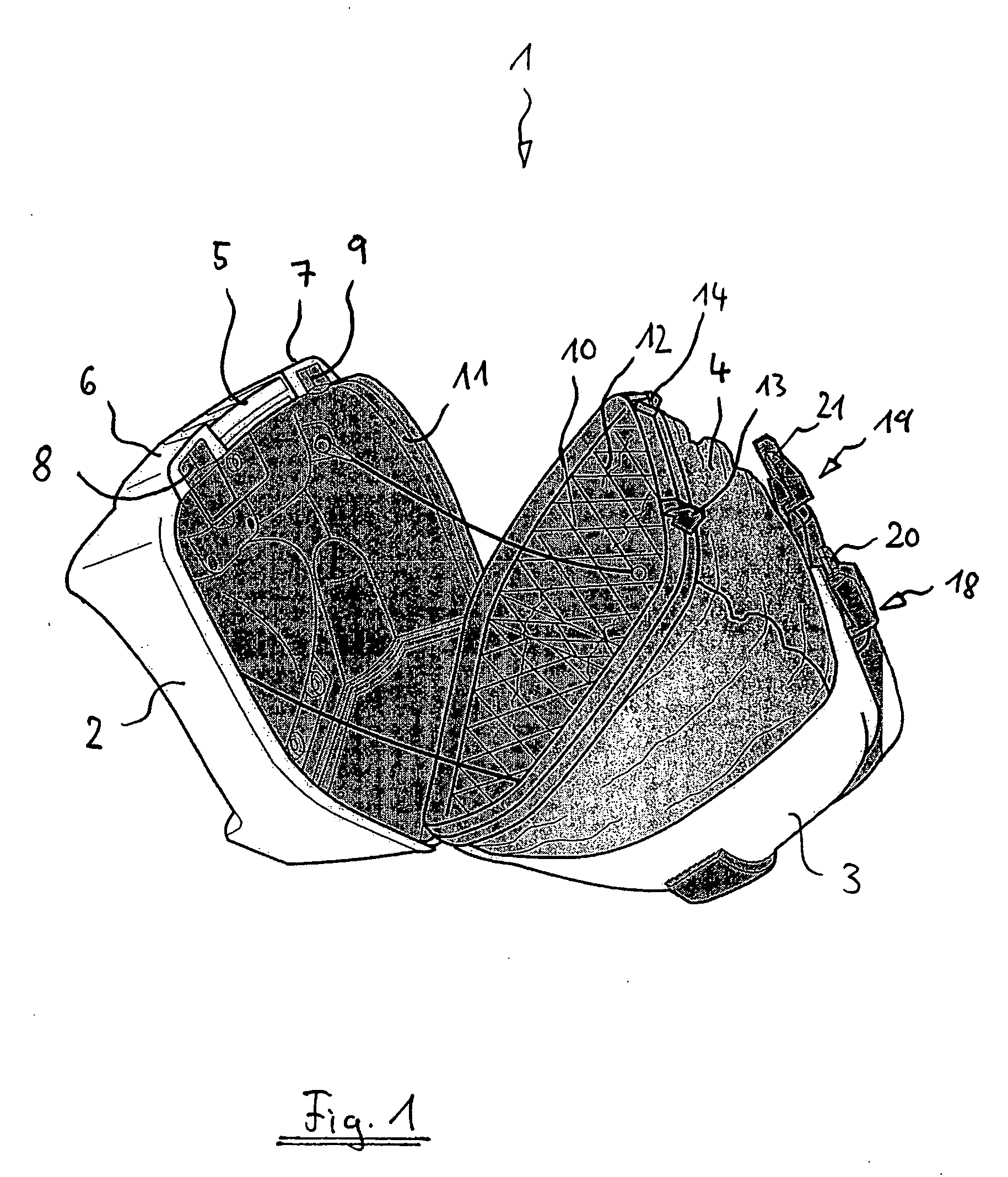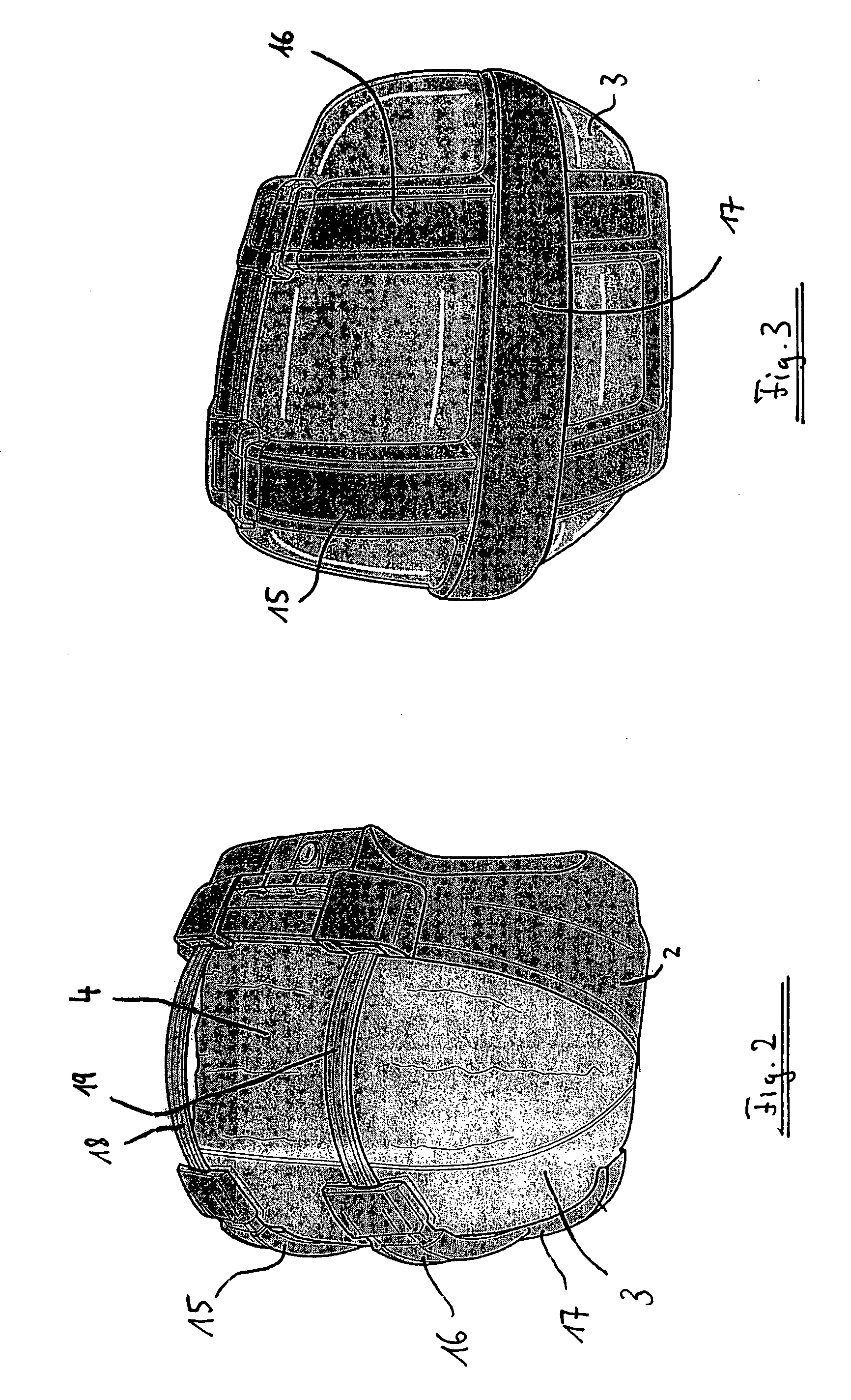Side bag for motorcycles
a saddlebag and motorcycle technology, applied in the field of saddlebags for motorcycles, can solve the problems of low rigidity of luggage containers, negative effect of driving stability, and maximum air resistance, and achieve the effects of reducing the risk of damage to the intermediate part of luggage, reducing theft risk, and improving theft security
- Summary
- Abstract
- Description
- Claims
- Application Information
AI Technical Summary
Benefits of technology
Problems solved by technology
Method used
Image
Examples
Embodiment Construction
[0021]FIG. 1 shows a saddlebag 1 comprising a luggage interior part 2, a luggage exterior part 3 and a luggage intermediate part 4. When the saddlebag 1 is mounted on the side of the motorcycle in the rear end area of the motorcycle, the luggage interior part 2 faces the motorcycle and the luggage exterior part 3 faces away from the motorcycle. The luggage interior part 2 is an essentially rigid plastic shell with a handle 5 provided on its top side. Receptacle openings 6, 7 are provided on the top side of the luggage interior part 2 with a first and / or second catch engagement 8, 9 arranged therein.
[0022] The luggage intermediate part 4 is made of a plastic-coated waterproof textile material that is relatively flexible. On the side facing the luggage internal part 2, the luggage intermediate part 4 has a comparatively rigid frame 10, the shape of which corresponds to the shape of the luggage interior part 2 in an exterior edge area 11. The luggage intermediate part 4 is reinforced ...
PUM
 Login to View More
Login to View More Abstract
Description
Claims
Application Information
 Login to View More
Login to View More - R&D
- Intellectual Property
- Life Sciences
- Materials
- Tech Scout
- Unparalleled Data Quality
- Higher Quality Content
- 60% Fewer Hallucinations
Browse by: Latest US Patents, China's latest patents, Technical Efficacy Thesaurus, Application Domain, Technology Topic, Popular Technical Reports.
© 2025 PatSnap. All rights reserved.Legal|Privacy policy|Modern Slavery Act Transparency Statement|Sitemap|About US| Contact US: help@patsnap.com



